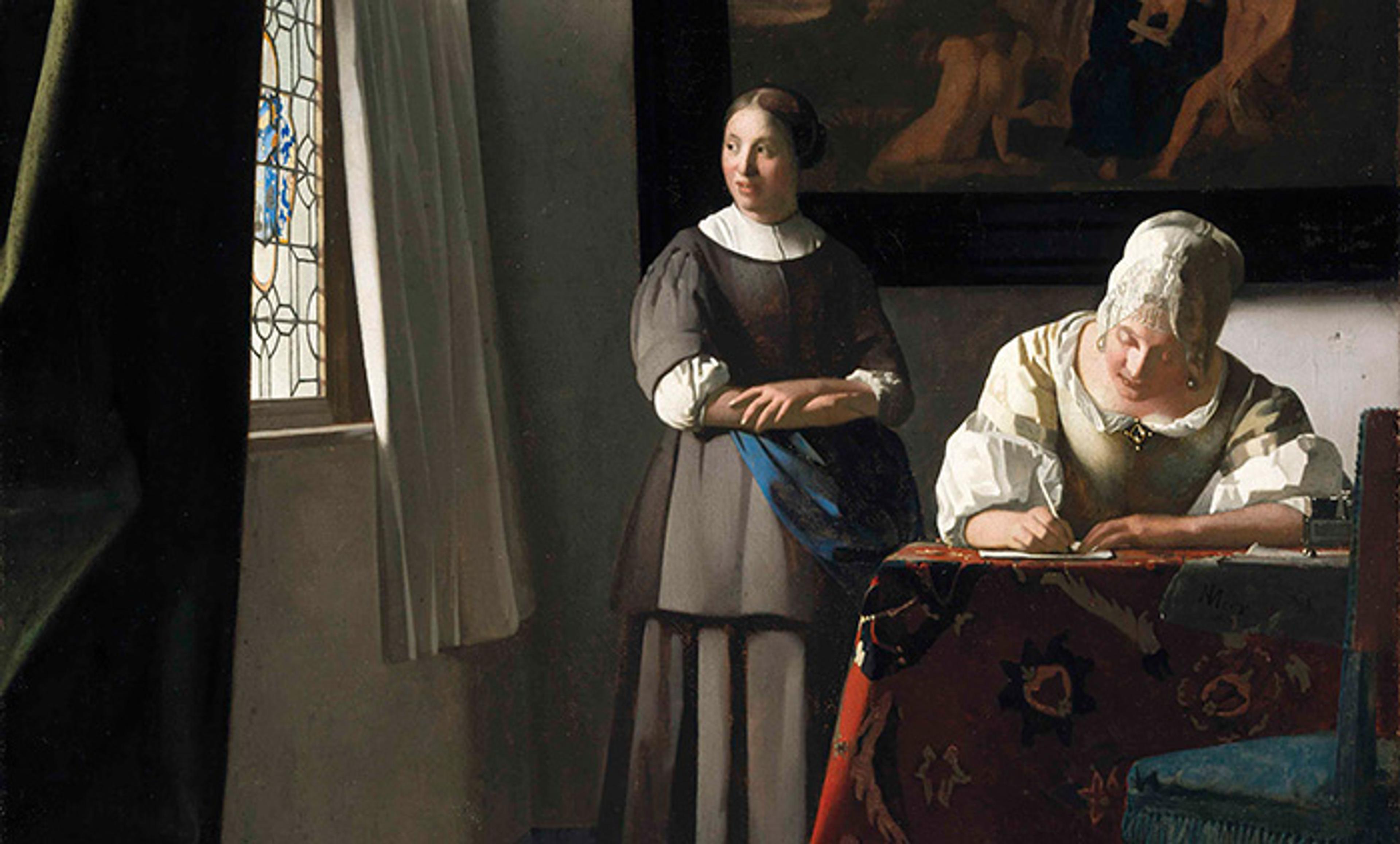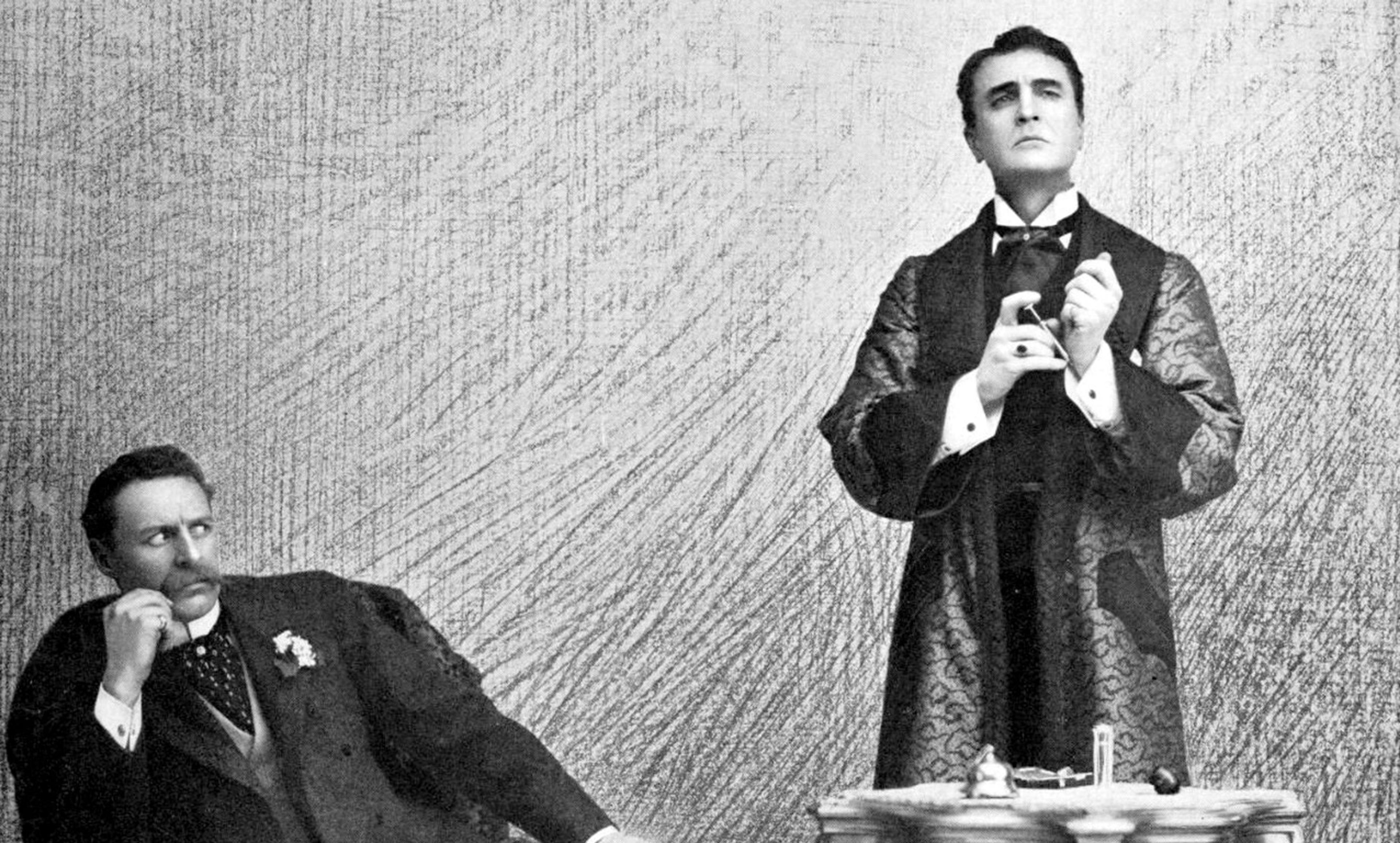Detail from Lady Writing a Letter with her Maid by Johannes Vermeer c1670-71. Courtesy National Gallery of Ireland/Wikimedia
The English philosopher Mary Astell (1666-1731) was a woman ahead of her time. She anticipated discoveries in the social dimension of knowledge and explanation that you might have thought were made only in the 21st century. She also revealed the existence of a form of epistemic – that is, knowledge- or thinking-related – injustice that’s caused by bad social conditions and fundamentally undermines how we think about ourselves. Despite being subjected to the very same conditions she identified, Astell managed to cut through the injustice to provide a new way of seeing things.
Epistemic injustice is one of the most difficult and important things for us to identify in our daily lives. It is tricky to spot because it operates below our notice – it plays on stereotypes and prejudices that we might not even know we have, or that we might not know are wrong. There are many kinds of epistemic injustice, such as what the philosopher Miranda Fricker in 2007 called ‘testimonial injustice’ (eg, when someone’s claims aren’t taken seriously because the hearer thinks that people with that identity are unreliable) and ‘hermeneutical injustice’ (eg, when someone’s claims aren’t understood because the intellectual resources needed to make sense of them don’t exist since they’ve been left out of the process of creating concepts). It is a testimonial injustice to find black people less credible just because they are black. It is a hermeneutical injustice that the term ‘sexual harassment’ didn’t exist for a long time because women weren’t part of the conversation about what constitutes appropriate behaviour.
Some epistemic injustices, such as testimonial injustice, are based on credibility imbalances, and some, such as hermeneutical injustice, focus on interpretive resources, but the epistemic injustice that Astell discovered isn’t a kind of testimonial or hermeneutical injustice. For her, it wasn’t that other people fail to take women seriously because they’re women – it is that what she called ‘bad custom’ makes women underestimate their own credibility. And it isn’t that the resources to understand bad custom don’t exist, but that bad custom makes those resources inaccessible to women.
Think about a time when you joined a new workplace or travelled somewhere for the first time. People probably behaved differently there. Perhaps the members of this group shared a set of values, beliefs, norms and practices that were new to you. Because this set is shared, it is a backdrop to any interaction within that group: it shapes how the group members see things, and it can explain their behaviours.
Explanations are crucial to understanding and navigating the world. As Sally Haslanger, professor of philosophy at MIT, points out, explanations that fail to account for the social structures at work behind the scenes of particular events are deeply unsatisfactory. In one of Haslanger’s examples, in a world where women make less money than men and childcare is prohibitively expensive, the social structure that makes those facts the case helps to explain why a new mother (rather than a new father) stays at home with their infant.
Like Haslanger, Astell recognised the ways in which background social structures explain behaviours. But, unlike Haslanger, Astell focused on cases where the social structure or set of values, beliefs, norms and practices – which she called custom – went bad.
According to Astell, custom is bad when it prevents us from developing our intellectual capacities as God intended. The best way to do this is through education, but in Astell’s time women weren’t formally educated (this practice was itself a part of bad custom). Bad custom is a problem because it damages women’s God-given nature – their ability to think properly. It undermines how women think partly because, without education, women are deprived of knowledge, but bad custom also corrupts thinking processes. It does this by creating prejudices, which are faulty lenses that filter how you see the world and thus what you can know. Even more concerning is that prejudices are habitual: the more you think in a prejudicial way, the harder it is to see the world differently. This effect is magnified in groups because there is no one to help you see clearly or just differently.
One prejudice that Astell was concerned with is what the philosopher Alice Sowaal in 2007 called the ‘Women’s Defective Nature Prejudice’, which holds that women are intellectually and morally inferior to men by nature. This fits nicely with the dominant 17th-century view that women are valuable only insofar as they are attractive. If the Women’s Defective Nature Prejudice is the lens through which people see the world, it is unsurprising that women think poorly. And if a woman is told that only her appearance matters, why wouldn’t she spend all her energy on that?
Wanting people to like you is a very human trait, but because 17th-century women lacked knowledge and clear thinking, spending time and energy on their appearance seemed like the best way to be valued by others. This made them less free. For Astell, we are free in proportion to how much we determine our own values and choices. Just as bad custom makes women think in narrow ways, it also narrows the possibilities to achieve what women want – to be valued.
Astell rejects bad custom because something being the case doesn’t mean that it should be: bad custom subordinates women, but that doesn’t mean that’s how society should be. Some might try to justify bad custom by appealing to God’s will as revealed by the Bible. In Some Reflections Upon Marriage (1700), Astell observes that these claims tend to be selective:
For by all that appears in the Text, it is not so much a Law of Nature, that Women shou’d Obey Men, as that Men shou’d not wear long Hair. Now how can a Christian Nation allow Fashions contrary to the Law of Nature, forbidden by an Apostle and declared by him to be a shame to Man? Or if Custom may make an alteration in one Case it may in another, but what then becomes of the Nature and Reason of things?
According to Astell, the Bible spends more time prohibiting men with long hair than it does claiming women’s absolute subordination. Astell is making a cheeky point: unless men are willing to admit that they are either violating God’s will for the sake of their hair, or that they are cherrypicking evidence, then the Bible cannot be used as proof for the rightness of bad custom. If some Biblical claims can be overlooked, then why not others?
This account of bad custom is helpful because it illustrates how background social phenomena can explain the ways that people think and act. In exerting this influence over women, it harms their intellectual capacities. Because bad custom perpetuates the Women’s Defective Nature Prejudice, it shapes the way that women interpret the world – it predetermines not only what women think but how they are able to think. Through bad custom, it becomes difficult to see how a woman would be able to trust her own knowledge if someone with ‘greater intellectual ability’ (ie, a man) tells her that she is mistaken.
Astell also shows how social structures such as bad custom lead to epistemic internalisation injustice or, rather, how bad custom makes women internalise claims about their inherent intellectual inferiority – so much so that they perpetuate their own oppression. It is like gaslighting, a kind of psychological abuse where someone forcefully asserts a different (and often false) reality. Because we are inclined to trust others, gaslighting undermines someone’s grasp on what is real and true, and what they can know.
In Astell’s account, bad custom anticipates 21st-century thinking – eg, Haslanger’s social structural explanations – and shows us how insidious social structures can be. As Astell’s own life’s work proved, if we can understand similar harmful contemporary phenomena, then perhaps we can defeat them.






